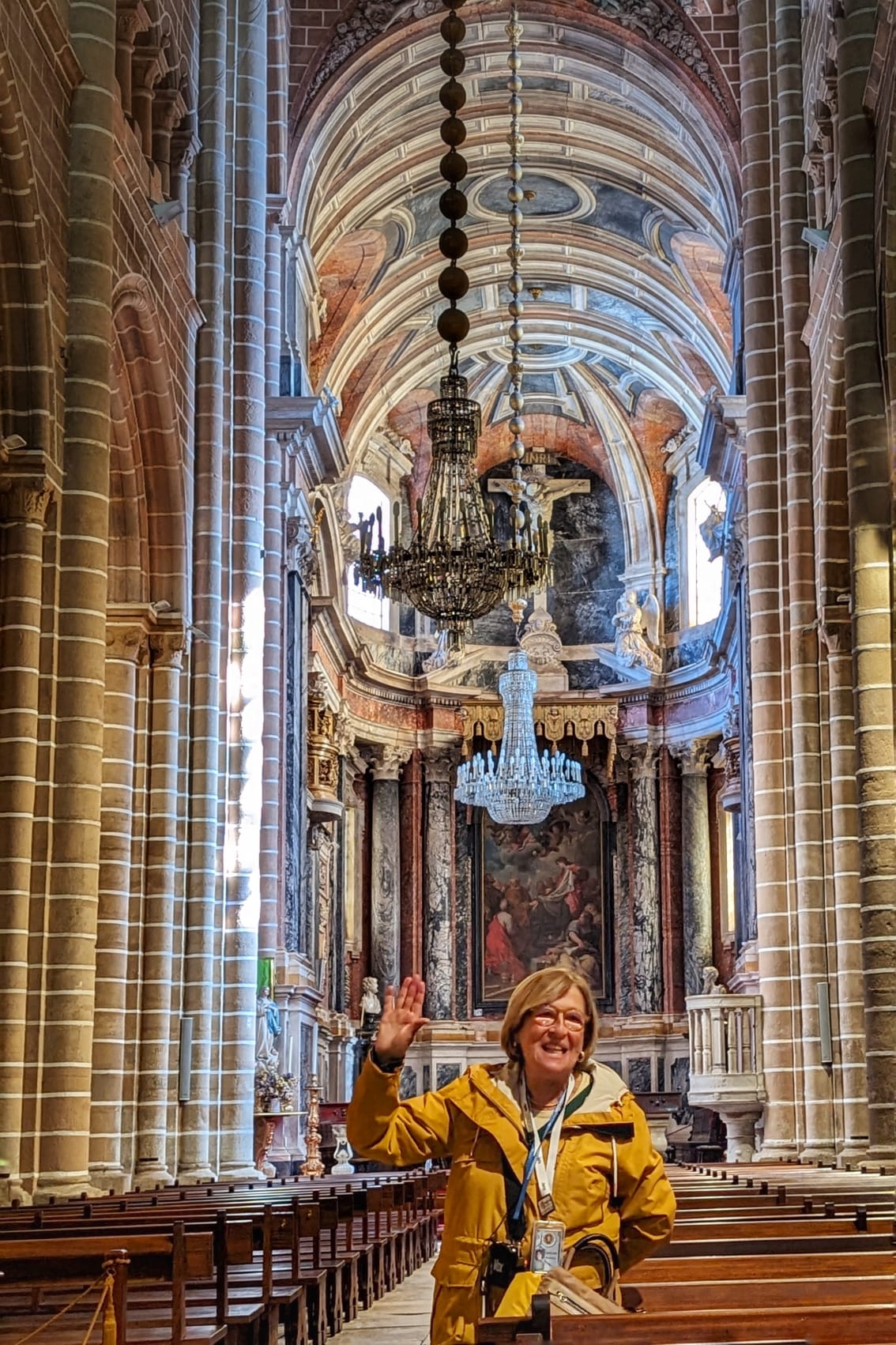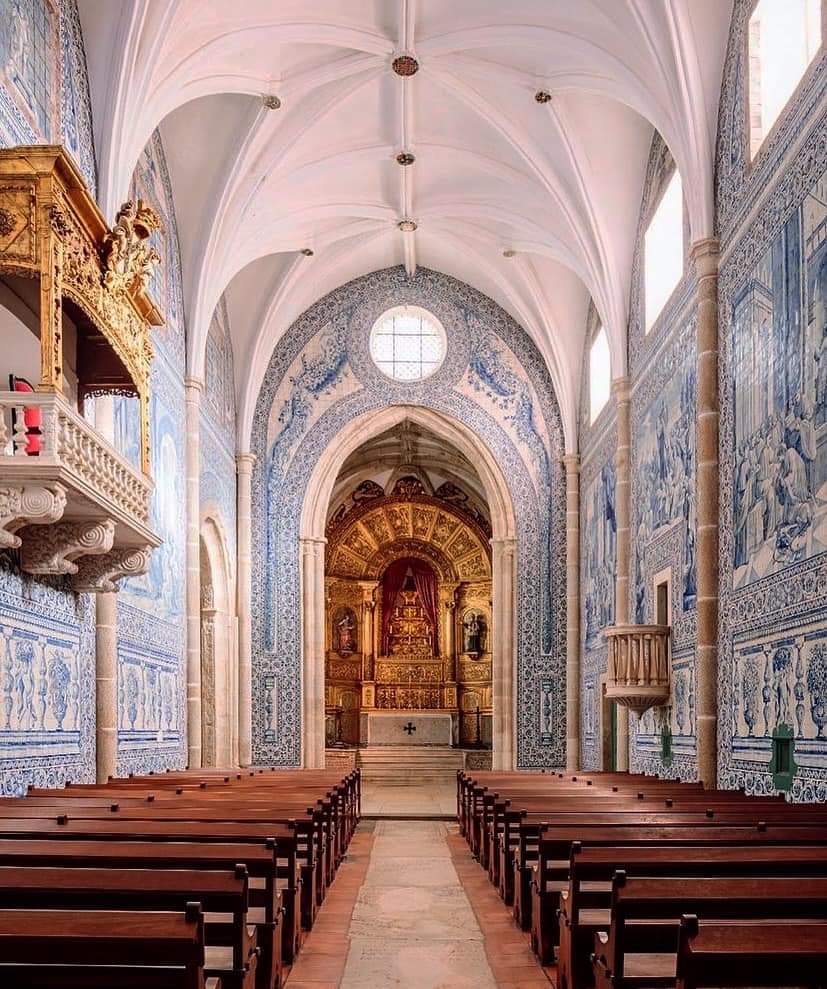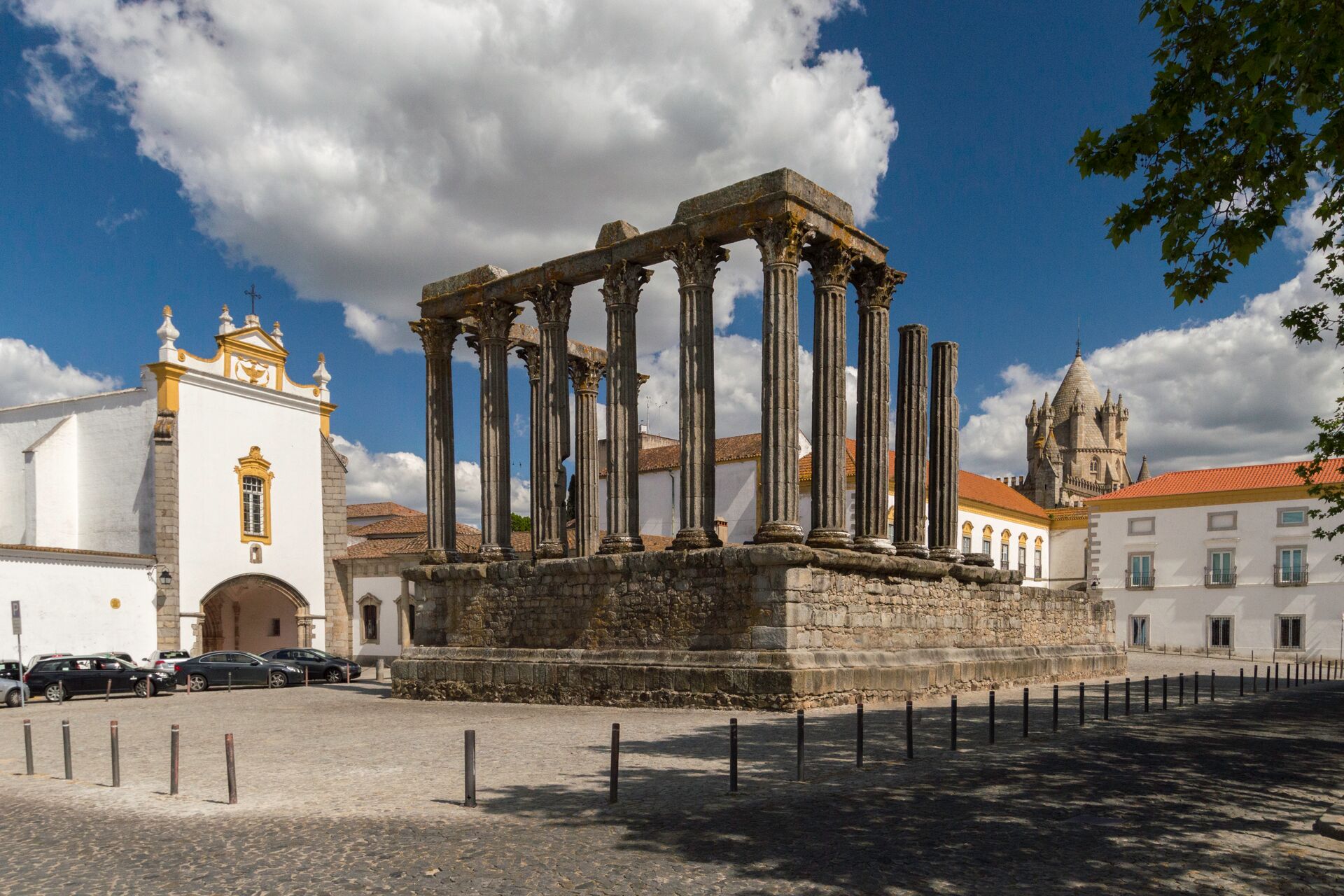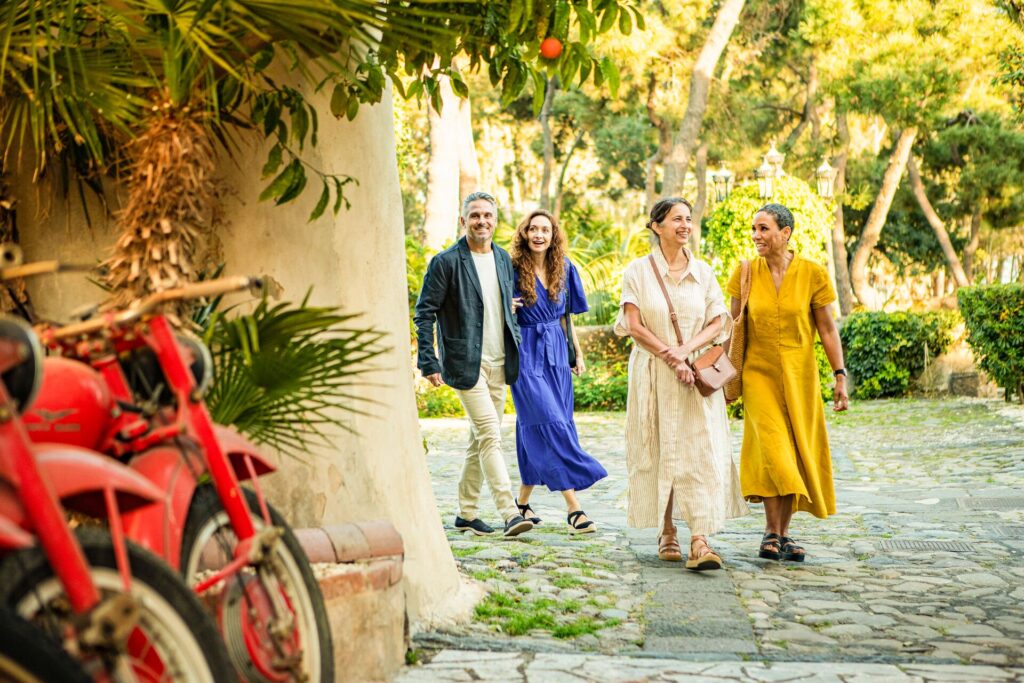With its white-washed houses, ancient ruins, winding streets and UNESCO recognized 14th century walls, Evora in southern Portugal is one of the country’s most underrated destinations. It may be a little off the beaten path, but it’s worth the trouble to find – if for nothing more than visiting two particular chapels, each with its own unique style of decor.
To find out more we spoke with Local Guide Maria, this week’s Insightful destination expert. Maria has lived in Evora and has been showing visitors around this picturesque destination the last 40 years. She tells us about some of the city’s highlights and why it is a great off-season destination.
Why is Evora so special?

Evora lies in the Alentejo Region of Portugal, known for its sun-baked olive groves, cork oak woodlands, fortified towns and excellent wines. The entire walled center of Evora is a UNESCO World Heritage Site, with many monuments and historical sites to explore and enjoy.
“What’s so intriguing about Evora is that it has been a landmark since Roman times. So, its structure and its spirit are visibly made up from the remnants of many different periods of history. There is history around every corner. In 2027 the city will be one of the European Capital of Culture locations, which goes to confirm its importance.”
Discover this on: Amazing Spain & Portugal, Country Roads of Portugal and Grand Spain & Portugal
The perfect off-season getaway
“We are not in short sleeves because we are locals, but I just came from town and visitors are in T-Shirts! The temperatures drop at the at night, but we never have temperatures below zero. There are not so many people this time of year compared to high season, but there’s still always a nice buzz to the place.
“If you are looking to travel more sustainably and avoid the crowds by choosing the shoulder season, Portugal overall is a great destination.”
You may be interested to read: 12 months, 12 unmissable destinations: the best places to travel in 2024
Roman roots and whitewashed houses
The white houses, balconies and tiles for which the picturesque city is known were introduced into region and the southern part of Portugal and Spain by the Arabs. “They were here between the 8th century in Evora and in this region until the 1165,” explains Maria.
“The white paint (made from limestone) was introduced to disinfect and to clean the houses. At the same time, it kept the houses cool by reflecting the sun. The south of Portugal is white to this day, both in this Alentejo region, and the Algarve region to the south.
You may also enjoy reading: Bottled history: the enduring legacy of Portugal’s oldest wine
The choice of 16th century Kings
“Although officially it was never capital of the Kingdom, the kings were very fond of Evora. Lisbon was becoming too busy because with the discoveries there were too many things going on.” During this period, Portugal was the first European power to begin building a colonial empire.
“So, they sometimes had long stays here and, whenever the king was around, all the VIPs were also in town. During this time the Royal Palace was enlarged and Evora was equipped with the facilities that were considered important in those days. It’s also when the town became an archdiocese and the university was opened, run by the Jesuits.
Enjoy a tour to Portugal: 9 reasons why Best of Spain & Portugal is a simply unmissable tour
The blue tiles of Loios Church

“Loios Church is the place to see the stunning blue and white tiles for which Evora, and indeed Portugal, is famous,” Maria tells us. “It was built in the 18th century which was a very big period of development for tile work techniques.
“When the north of Europe was covering walls with tapestries, and producing woven rugs and such things, we in Portugal did the same motifs on our tiles and used these to decorate our walls.
“You can see tile work in other places, but it’s not very common, and Loios Church stands out in that it is covered with tiles from the floor to ceiling.
“The walls were created by Portuguese craftsmen and tell the story of Saint Lawrence, the patron St of the Loios congregation – this was the Church of the monastery next door. Today’s the building is privately owned. It really is beautiful and something you must see with your own eyes.”
Bookmark for later: All the ways you’ll experience the Insight difference when you travel to Portugal
The Chapel of Bones

“This used to be the meditation room of the Franciscan Friars. The late 16th century was the period of the reformation in Portugal and Catholicism was preaching that ‘only the soul matters’ – in the end we are all equal to the eyes of God. So, the big message was to prepare the soul for eternity.
“We presume these were all poor people because those bones belonged to several cemeteries of the churches. All churches had a small graveyard on the side for the people who could not afford to be buried inside the church. Very often in common graves, and with no name.”
Souls never forgotten
“Many bones were left behind because they had nobody to look after them. Unidentified, nobody knew who they were. The Franciscans gathered those bones, and they gave them a sacred ground. That’s how this started and then they’ve inadvertently become a more prominent part of history than ever imagined.
“Now people come from all over the world to see them. Some say a prayer, maybe about how their life would have been. Some take pictures, then return home and show the pictures to friends. So, they’re not forgotten anymore. I like to show guests the bones in that perspective.”
You may also be interested to read: Exploring the history and traditions of Mexico’s Day of the Dead
More Evora highlights

“The whole of Evora is beautiful at sunset because the sun gives a golden color to all the whitewashed walls. And the temple’s granite columns are just spectacular in the evening glow. So, I always tell them to go to the temple as it is up high, with unforgettable views across the city.”
“The University is also an impressive sight,” Maria says. “Built in the 16th century, it is Portugal’s second oldest university. Architecturally it is stunning, with the most important building being the Colégio do Espírito Santo. You can also admire tile work in the classrooms. The university is also interesting because it is still a university today. So, although it’s a monument, it’s still alive.”
“The whole town of Evora is a highlight. Not only the buildings that are considered monuments, but the whole town is interesting. You can just walk and enjoy. Sip wine and enjoy great food. Visitors often come here from the capital, and going to Evora from Lisbon is a welcome and relaxing change.”





